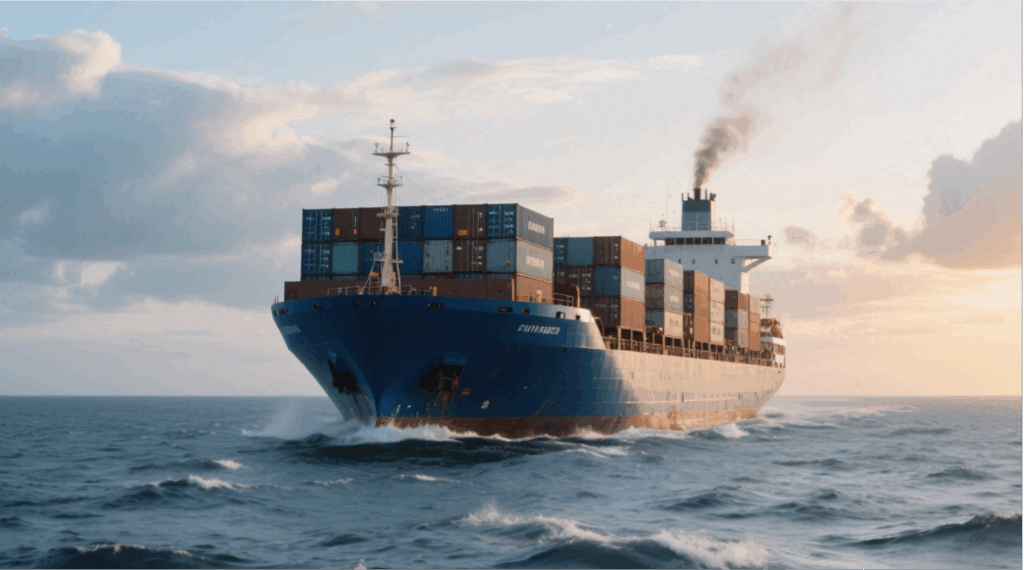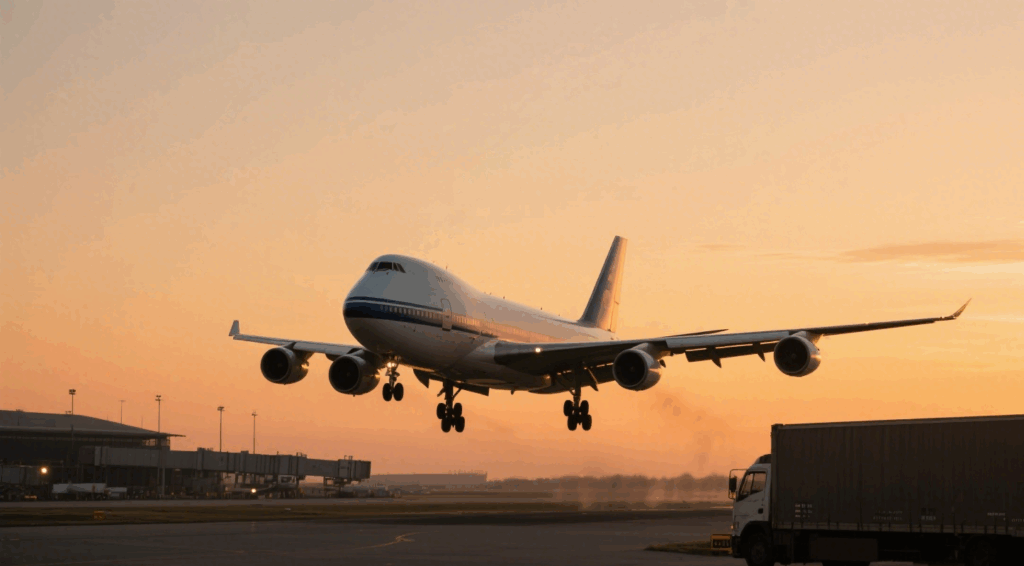Importers often struggle with hidden surprises when arranging duty handling China to France — unexpected tariffs, complex customs rules, or delays can disrupt supply chains. This article clarifies every step: how duty is calculated, clearance procedures, cost comparisons across transport modes, real case examples, and strategies to optimize your import process.
What Does “Duty Handling China to France” Mean?
“Duty handling China to France” refers to the process of managing import duties, taxes, customs clearance, and compliance procedures when goods arrive in France from China. It includes assessing the tariff, paying Value Added Tax (VAT), preparing customs documentation, and coordinating with freight forwarders or customs brokers.
Right from the beginning, effective duty handling reduces surprises, avoids fines, and ensures your goods enter France promptly within your supply chain.
Why Duty Handling Matters for China → France Trade
Importers often neglect this aspect and suffer consequences:
- High customs delays and demurrage costs
- Incorrect HS codes leading to misclassification
- Cash flow issues due to unplanned import VAT
- Poor forecasting of landed cost
By proactively managing duty handling China to France, you gain clearer landed cost forecasts, avoid compliance risks, and streamline your delivery schedule.
How Are Import Duties and Taxes Calculated?
To understand duty handling China to France, you must grasp how the import charge is composed:
| Component | Description | Rate / Basis |
|---|---|---|
| Customs Duty | Tariff based on HS code | Varies per product category |
| Import VAT | Applied on CIF + duty | Typically 20% in France |
| Handling / Brokerage Fees | Charged by customs broker or agent | Flat or percentage |
| Excise or Special Taxes | Applies to specific goods | e.g., alcohol, tobacco, etc. |
Calculation flow example:
- Goods value + freight + insurance = Customs Valuation (CIF)
- Apply customs duty rate to CIF to compute duty owed
- Add duty to CIF, then compute VAT on that sum
- Add broker, handling, and any special excise charges
Because of this cascading formula, import VAT sometimes feels deceptively high — yet it’s standard across EU import regimes.
What Documents Are Required for Duty Handling?
Smooth duty processing requires proper documentation. Here’s a checklist:
| Document | Purpose | Notes / when required |
|---|---|---|
| Commercial Invoice | Declares value, HS codes | Mandatory |
| Packing List | Weights, dimensions, itemization | Mandatory |
| Certificate of Origin | Qualifies for duty reductions or preferential rates | When applicable |
| Bill of Lading / Air Waybill | Transport contract | Sea/air/rail mode dependent |
| Import License / Permit | For restricted or controlled goods | Required for electronics, chemicals, etc. |
| Customs Declaration | EU import filing | Filed by broker/forwarder |
| Insurance Certificate | Covers risk during shipment | Highly recommended |
| Product Certifications | e.g. CE marking, safety compliance | Required for regulated items |
Absent or incorrect documents can lead to customs holds, inspections, or penalties — thus accuracy matters greatly for duty handling China to France.
Where and When Is Duty Paid?
At French Port or Border Entry
Most duty payments occur when the shipment arrives at France’s customs-controlled border location or port of entry. The customs office demands payment and verification before releasing goods.
Broker / Customs Agent Role
Importers often appoint a licensed customs broker or freight forwarder to submit declarations, pay duty on their behalf, and liaise with French customs authorities. This simplifies the process and avoids delays.
Prepaid or Delivered Duties
In some cases, companies use Delivered Duty Paid (DDP) terms — the seller (or forwarder) accounts for all duties and taxes in advance so that the buyer receives goods delivered clean, with duty handling handled beforehand.
How Much Does Duty Handling China to France Cost?
The cost of duty handling includes:
- Customs duty based on product classification
- Import VAT (20% base in France)
- Broker / agent fees (flat or % basis)
- Financial charges (e.g., banking fees for payment)
- Penalties for misclassification or undervaluation
Here is a rough example cost scenario:
| Item | Value / Rate |
|---|---|
| CIF value of goods | €10,000 |
| Customs duty rate | 5% → €500 |
| Duty-inclusive value | €10,500 |
| Import VAT (20%) | €2,100 |
| Broker fee | €150 |
| Total duties & handling | ~€2,750 |
These costs are illustrative; actual figures depend on your HS classification, product specifics, and your broker’s fee schedule.
Which Shipping Modes Affect Duty Handling?
Your chosen transport mode can influence customs interactions and duty handling complexity. Here’s a mode comparison:
| Mode | Transit Time | Duty Handling Complexity | Pros & Cons |
|---|---|---|---|
| Sea Freight | 30–40+ days | Standard port customs processing | Low cost, slower handling |
| Air Freight | 3–7 days | High-speed customs, priority lanes | Fastest, expensive, tight packaging |
| Rail / China–Europe | 15–22 days | Border transit declarations + EU entry customs | Balanced speed and cost, multiple borders |
Despite difference in transit times, the core duty handling (valuation, classification, VAT) remains similar across modes. However, air shipments often benefit from faster customs slots, whereas sea and rail may experience port or border delays.
Real Case Examples of Duty Handling China → France
Case 1: Consumer Electronics, Shenzhen → Paris (Air + DDP)
- Cargo: 800 kg of consumer electronics
- Mode: Air freight to Paris CDG, DDP service
- Time: 4 days transit + 1 day clearance
- Cost: Duty & VAT ~€5,000, broker handling inclusive
- Lesson: DDP simplifies duty handling for buyers who want turnkey delivery
Case 2: Furniture Parts, Shanghai → Marseille (Sea + FOB)
- Cargo: 20-ft container
- Mode: Sea freight to Marseille port, importer handles duty
- Time: 32 days transit + 2 days clearing
- Cost: Duty ~€1,800 + VAT + €200 brokerage
- Lesson: Importer must plan duty handling costs and timing after shipment arrival
Trends in Duty Handling and Import Compliance
- Automation & Digital Declarations: More customs authorities adopt electronic systems for faster duty processing.
- Data-Driven Risk Assessment: Customs use AI to flag suspicious declarations.
- Harmonization of Tariff Codes: More global alignment of HS codes reduces disputes.
- Sustainability Regulation: Carbon taxes and environmental duties are emerging for certain imports.
- Trade Agreement Evolution: New treaties may shift imprint duty rates or requirements between China and the EU.
Such trends mean that duty handling China to France will become more transparent, faster, and data-intensive in coming years.
Conclusion
Duty handling China to France is a critical aspect of international trade that directly impacts your landed cost, cash flow, and delivery reliability. By understanding how import duties and VAT are calculated, preparing accurate documentation, selecting competent brokers, and exploring DDP or negotiated methods, you can reduce delays and improve your overall supply chain performance.
- Consult TJ China Freight Forwarding for the lowest quote. They will provide you with reliable, cost-effective service.
FAQ:
Q1.How do I calculate customs duty when importing from China to France?
You can estimate customs duty using your product’s HS code and CIF value to calculate accurate import tax obligations.
Q2.What are the main documents needed for smooth customs clearance?
Prepare commercial invoices, packing lists, and certificates of origin to speed up customs clearance and avoid penalties.
Q3.Can import VAT from China to France be reclaimed later?
Yes, registered French importers can reclaim import VAT through periodic tax returns under valid documentation.
Q4.How can freight forwarders help with duty handling?
Professional freight forwarders manage customs paperwork, duty calculation, and clearance procedures to simplify your logistics process.
Q5.What happens if my declared value is lower than market price?
Under-declared goods may trigger customs audits, delayed delivery, and fines for incorrect duty calculation.





